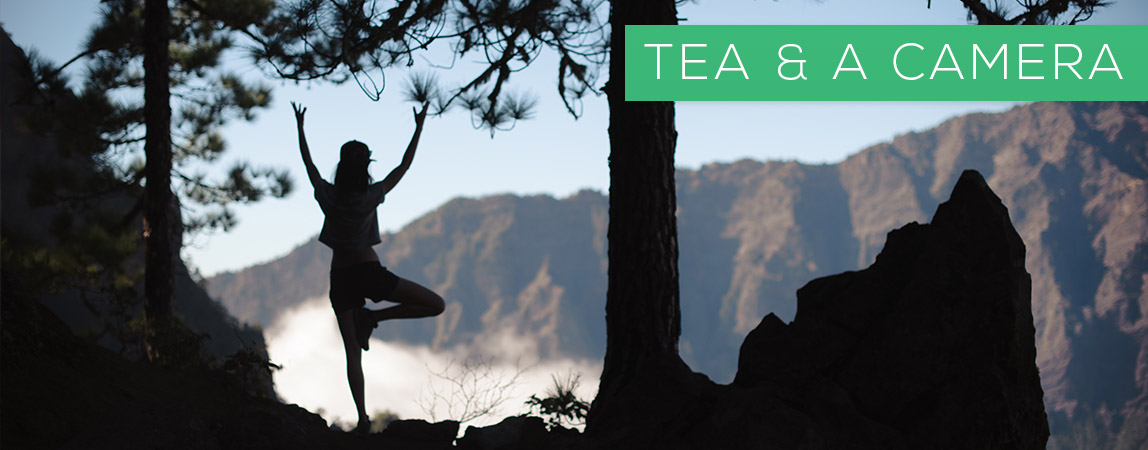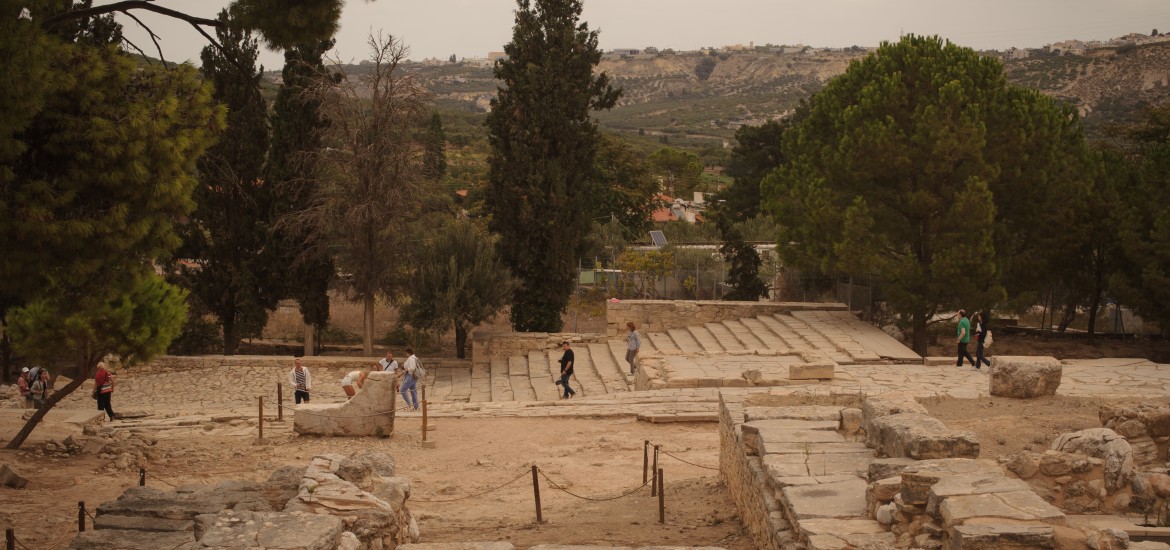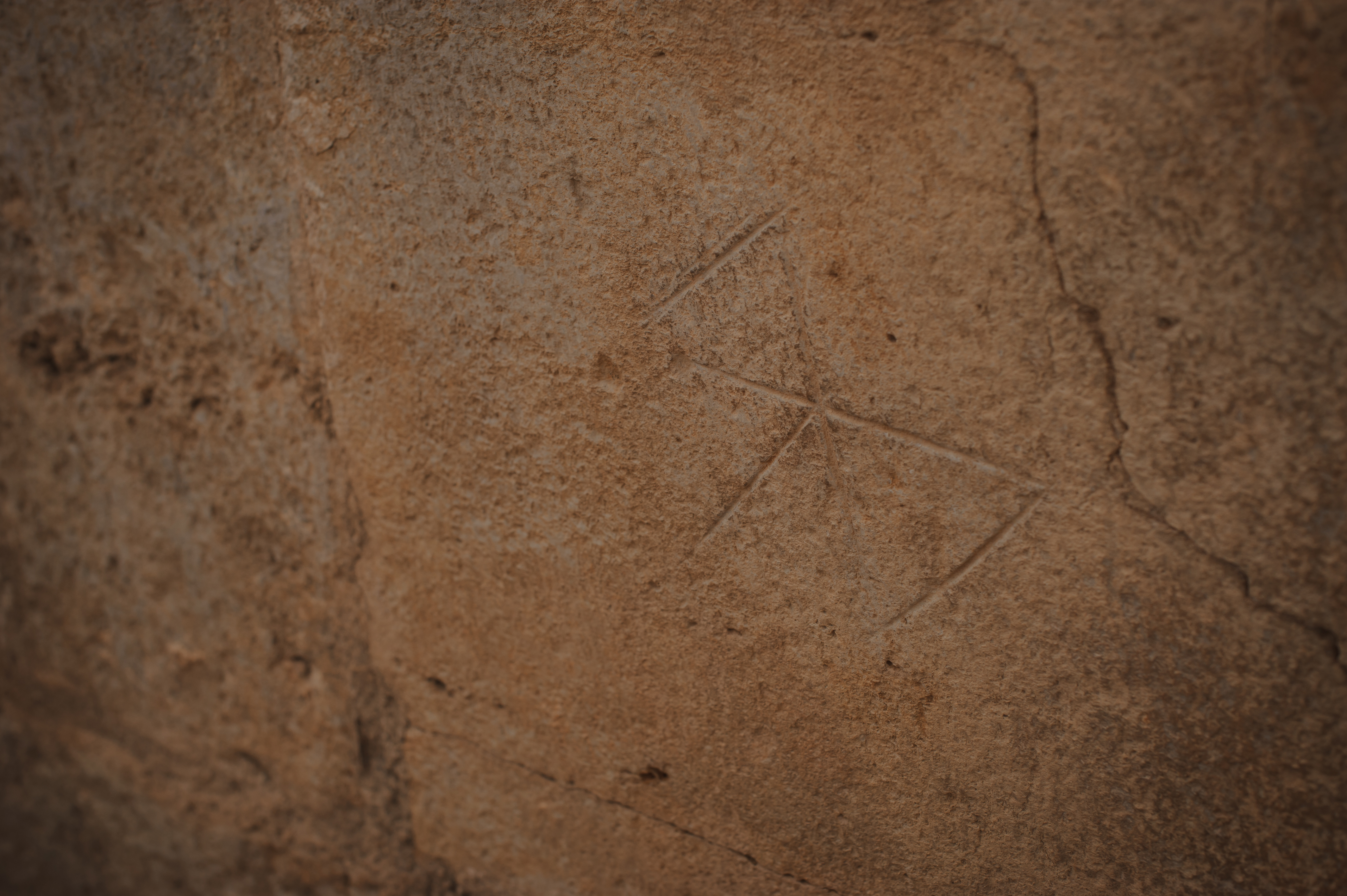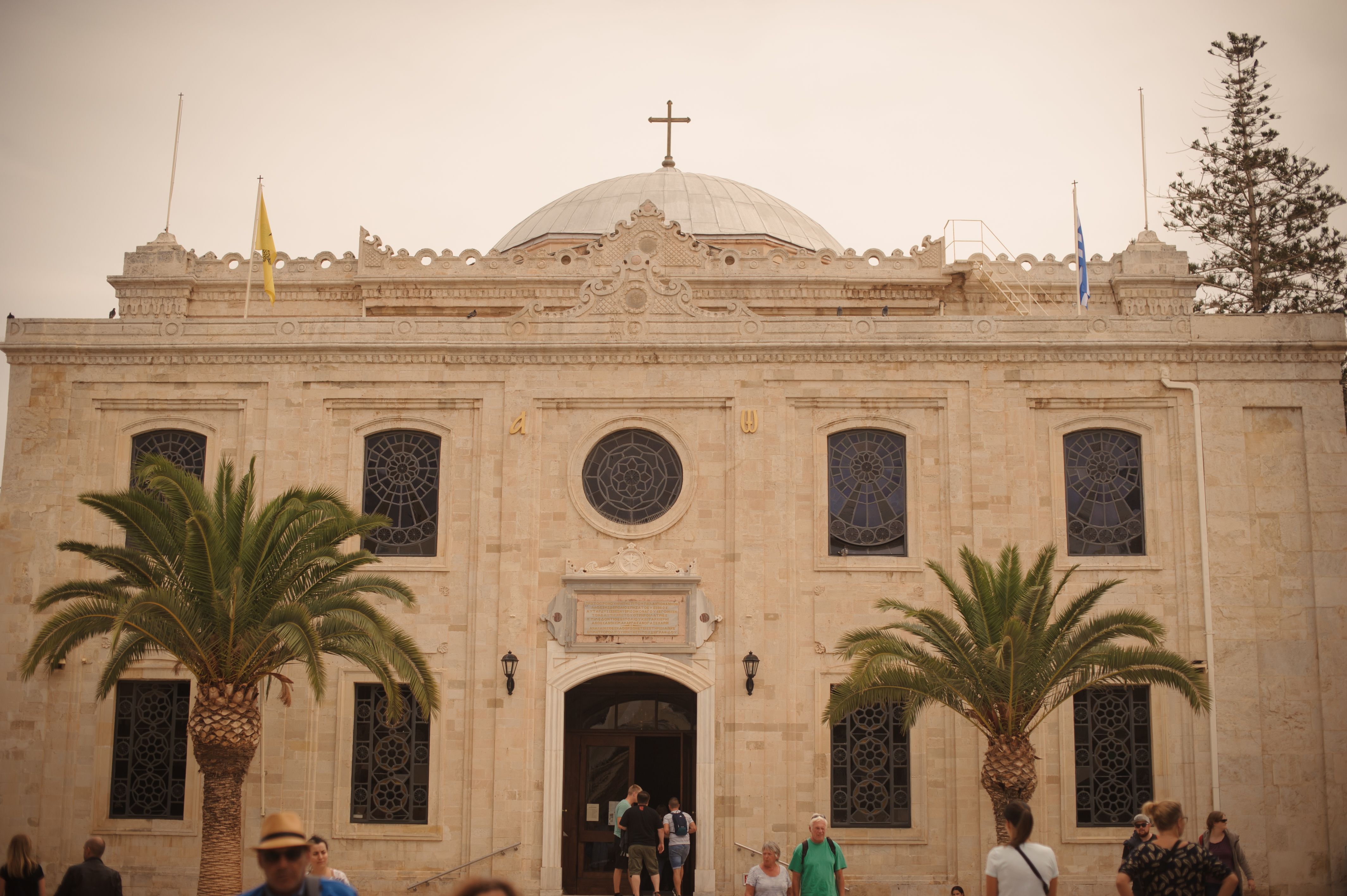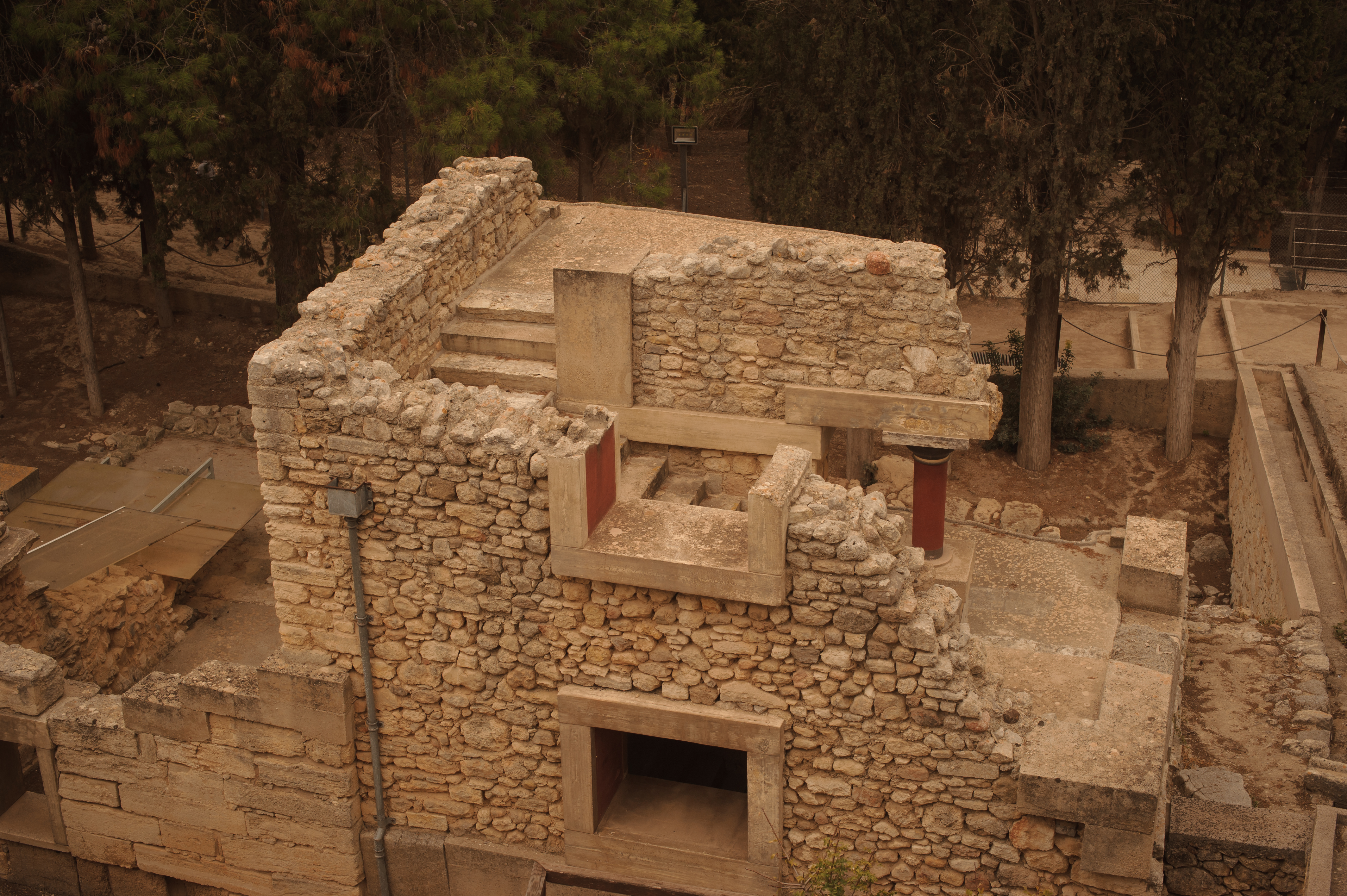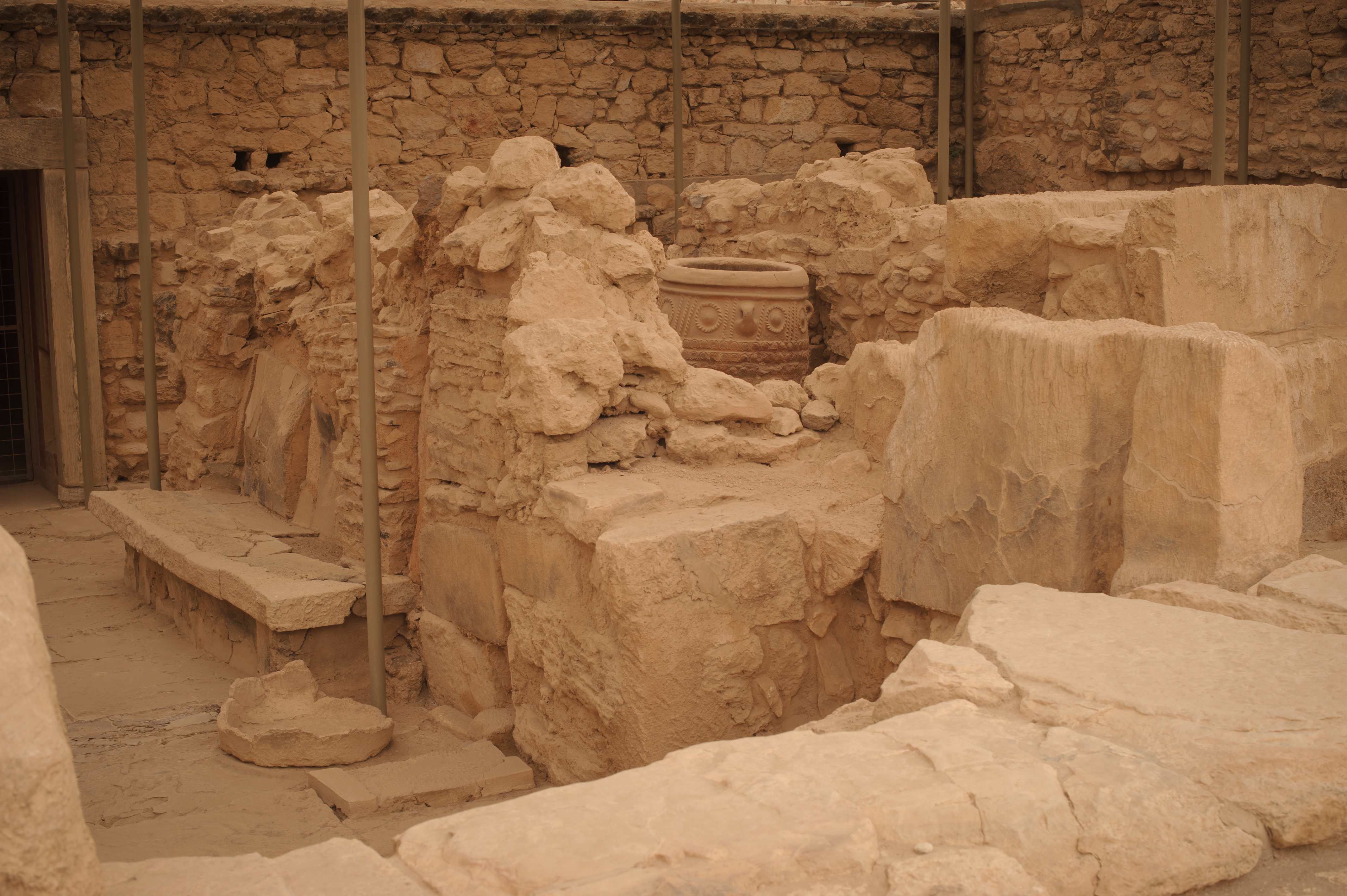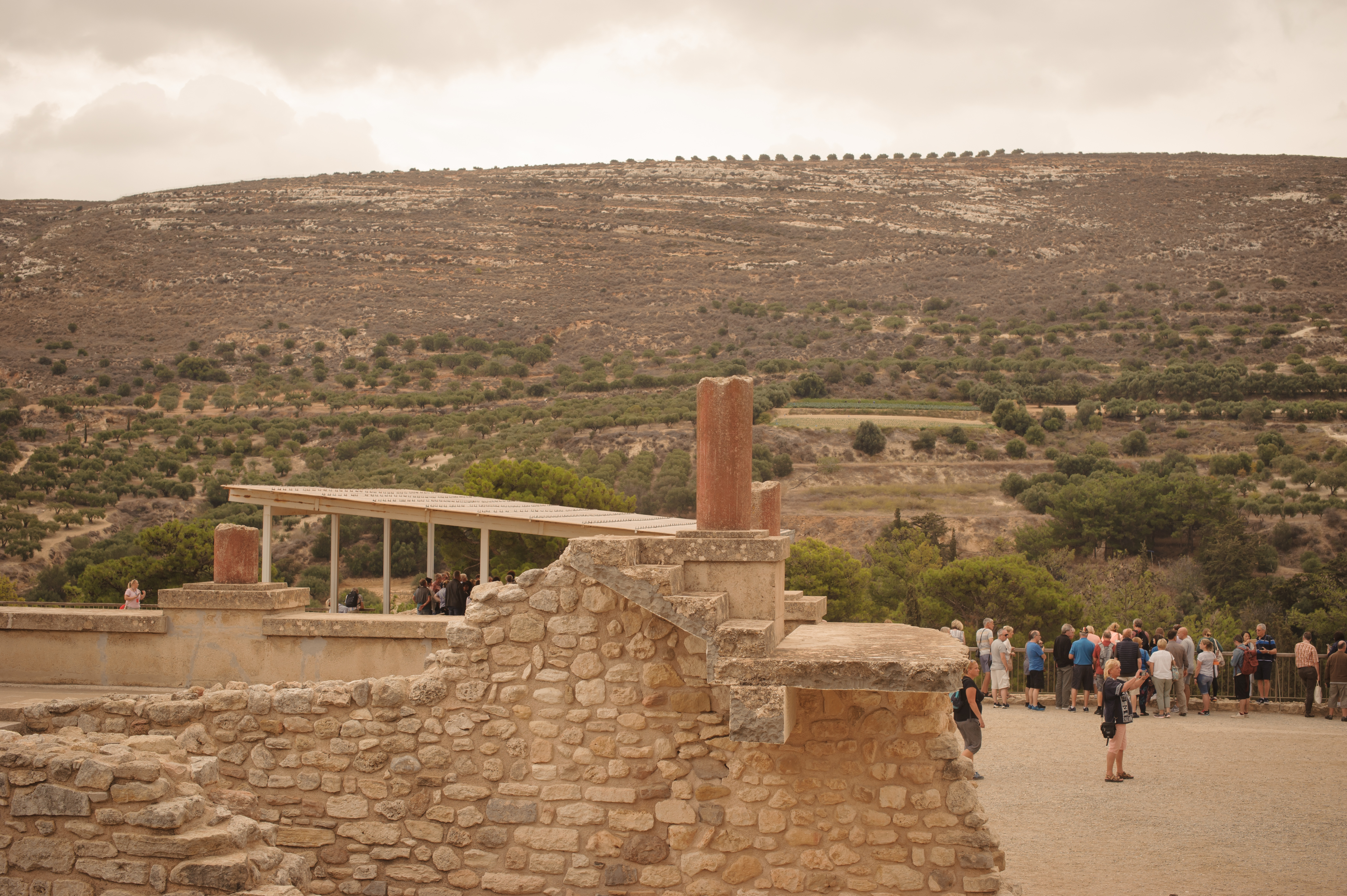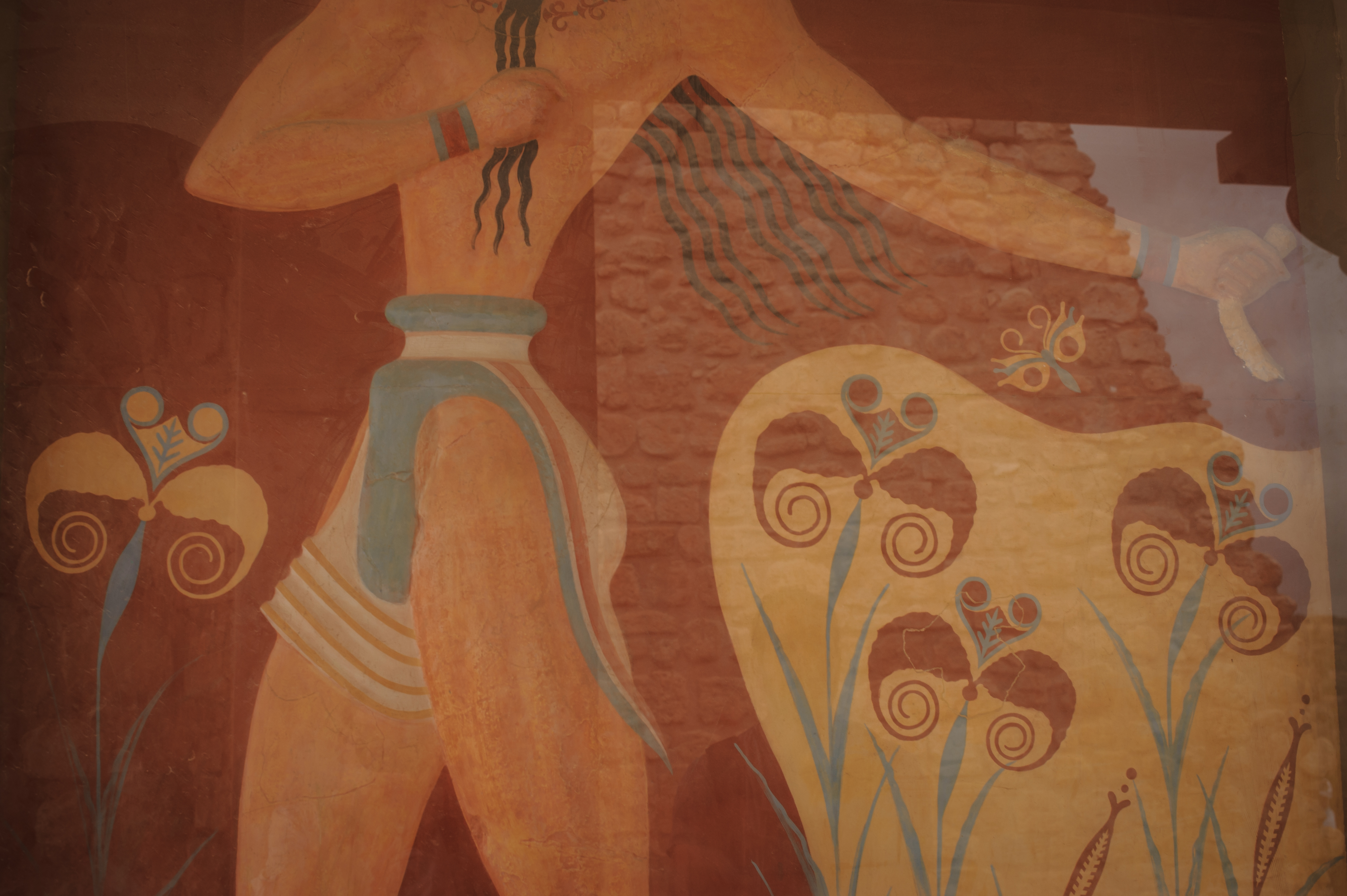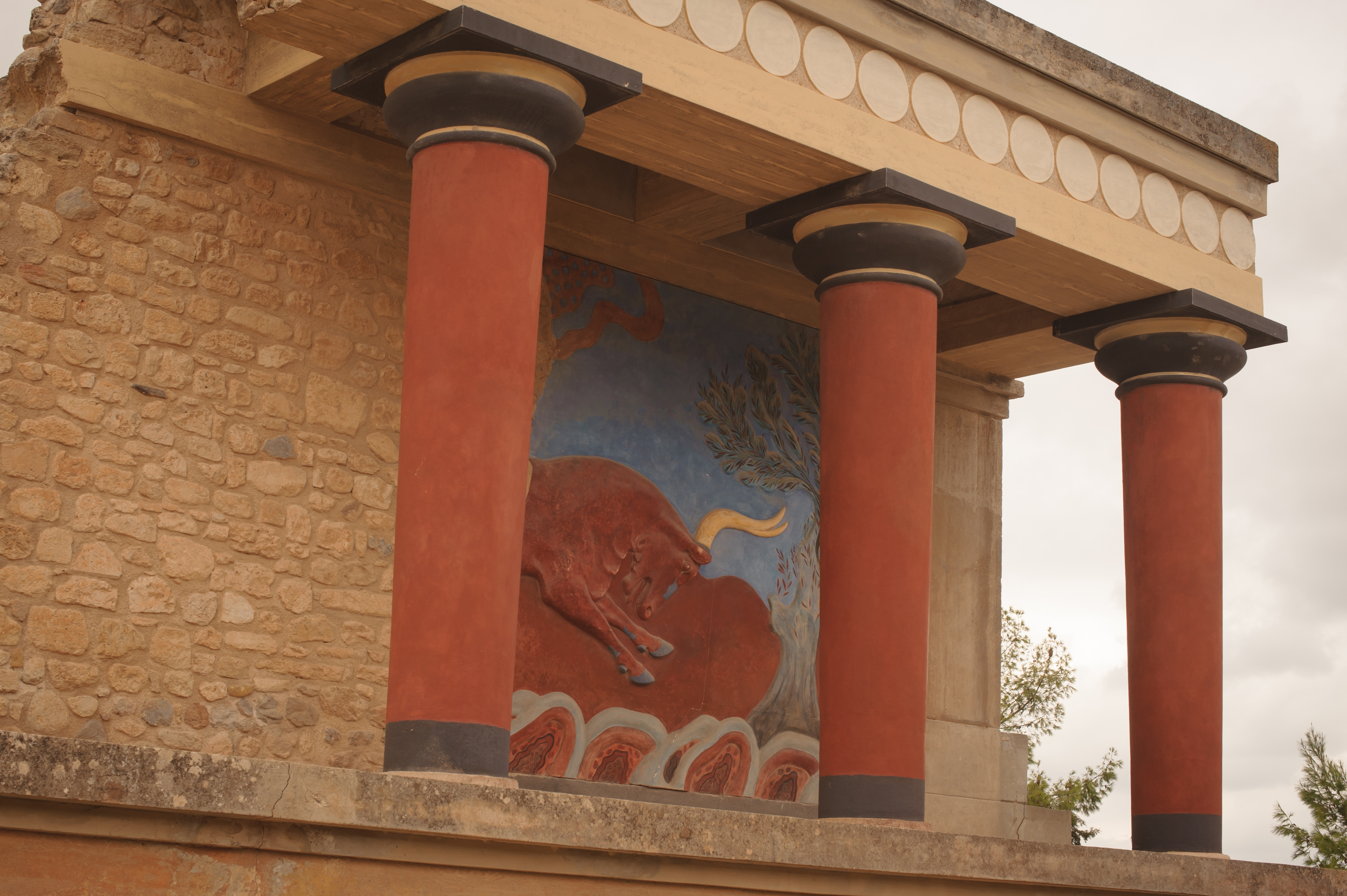Situated in northern Crete, Knossos used to be the capital of Crete in Minoan times. As I mentioned in my last post, the site was inhabited since about 7000BC and may even be Europe’s oldest city. It’s certainly one of the most popular spots on the island. We explored Knossos before heading to the Hieralikon Archaeological Museum, just a few minutes away. Visiting Knossos first is a good idea; the ancient ruins give you a sense of context when you see the beautiful details in the museum.
What to expect at Knossos
Having visited Phaestos before, we found the ruins of Knossos to be somewhat similar. The main difference is that there was more detail preserved and more restoration was done by British archeologist Sir Arthur Evans. The restoration is somewhat of a contentious topic as certain people question his accuracy. If you’d like to see murals and the frieze, do make a point of visiting Knossos though.
It takes about 2 hours to explore the area, but it is busy. When we arrived at 10:00am, we could see that the place was quickly filling up with crowds of tourists. We’d arrived early enough to get a free parking spot but even so, multiple queues were forming outside the ticket office. Tour groups moved around the walkways slowly, blocking pathways and detracting from some of the magic of the place. By comparison, Phaestos is way more quiet, leaving a little more space for imagination.
How to get to Knossos
Knossos is situated a small distance outside of the city of Hieralikon in northern Crete. It’s a 2 hour drive east from Chania.
We parked at Knossos below the bus parking area, then looked around the ruins and later took a bus to the museum in the city of Hieralikon. The bus took us directly from outside Knossos to the museum in about 20 minutes. I think it only cost an extra €2 to get the combination ticket that included the museum entrance fee. The entrance fee for the main attraction only, Knossos, is €15 per person and inside there is a souvenir shop and a cafe as well as toilets. Find out more about Knossos on this website.
Exploring the Hieralikon Archeological Museum
There really is a lot to see in the archeological museum! You could even go back on two separate visits if you want to take it all in. We only had a few hours and saw as much as we could. Like Knossos, the museum was also busy by late morning. The experience felt like we were trapped in a slow moving queue at some points. If we’d arrived earlier, I think we could have avoided the crowds. Anyway, we stuck it out and I’m glad we did, because we got to see some really cool things.
The museum has a selection of Roman and Greek marble statues that are quite interesting in terms of fashion and general sculptural effects. In the next room is a large collection of diverse artefacts. As Crete is surrounded by water, it makes sense that octopuses were a popular theme for ancient Cretan civilisations. Many different styles of pottery and vessels decorated with wobbly-legged octopi or squid, with wide eyes, were on display. There was also quite a lot of beautifully preserved jewellery made out of gold and colourful beads carved into flowers. Original details from Knossos, such as the colourful friezes, can be seen upstairs in the museum. Interesting ancient coins are also displayed there.
My favourite finds were: the Phaestos Disc (from the ruined city of Phaestos in the south), the bee amulet and a wooden statue of acrobats leaping over a bull.
Travel tip: Buy return bus tickets from the little kiosk next to the bus stop for a euro cheaper.
